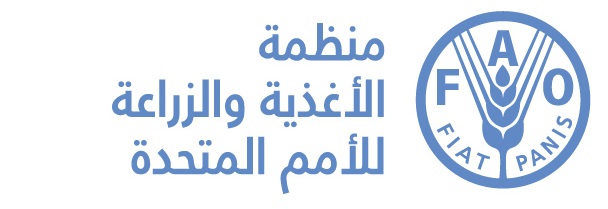Detection of Russian wheat aphid (Diuraphis noxia) in South Australia and Victoria
- old revision
- Publication Date
- خميس, 03 نوفمبر 2016, 05:05
- اخر تحديث
- نوفمبر 3, 2016, 5:05 ص
- Report Number
- AUS-74/1
- الدولة
- Australia
- Pest Id
- Diuraphis noxia - (BRAYNO)
- Report Status
- Preliminary
- Hosts
- The Russian wheat aphid is restricted to grasses and it reproduces best and does most damage on cool-season grasses. The hosts that are most severely affected are: • barley (Hordeum vulgare) and wheat (Triticum aestivum). Other primary hosts include durum wheat (Triticum durum), field broom grass (Bromus arvensis), Elymus sp. and jointed goatgrass (Triticum cylindricum). The Secondary hosts include: • cereal rye (Secale cereale), triticale (Triticum aestivum x Secale cereale) and various grasses in the Poaceae family, such as oats (Avena satvia), tall wheat grass (Agropyron elongatum) and Indian rice grass (Oryzopsis hymenoides). • Diuraphis noxia requires host plants year round to persist in an area. This aphid is able to develop on cool-season grass species as well as warm-season grass species. 140 grass species have been listed with varying degrees of suitability for D. noxia reproduction. • The reproduction of the Russian wheat aphid on warm-season grasses is low but they can serve as potential host.
- Pest Status (old values from ISPM 8 -1998 )
-
- Present: only in some areas
- Pest Status (ISPM 8 - 2021)
-
- Present: not widely distributed and under official control
- Geographical Distribution
- South Australia – The pest has been found in cereal crops in properties at State’s mid north (south of Tarlee). The affected properties sit within an area of 1400 square kilometres from the Tarlee area, down to the Mount Lofty ranges in the state’s south east. Victoria – On 9 June 2016, the presence of Russian wheat aphid was also confirmed in western Victoria at Kaniva, Nhill, Yaapeet and McKenzies Creek.
- ملخص
Russian wheat aphid is a major production pest of wheat and barley plants. This aphid is approximately 2 mm long, pale yellowish green with a fine waxy coating. The pest injects toxins into the plant during feeding which retards growth and with heavy infestations, kills the plant. Affected plants will show whitish, yellow and red leaf markings and rolling leaves. Russian wheat aphid is a phloem feeder and requires moist/green plant material to survive. It typically feeds at the flowering, fruiting, seedling and vegetative stages of plant growth and is unlikely to survive on cereal seed or hay.
The National Management Group (NMG), comprising all Australian governments, Grain Producers Australia and Plant Health Australia, met on 8 June 2016 to discuss the incursion of Russian wheat aphid (Diuraphis noxia) in South Australia. Acting on advice from the Consultative Committee on Emergency Plant Pests (CCEPP), the NMG agreed that it is not technically feasible to eradicate Russian wheat aphid from Australia. The NMG agreed that a national management plan for Russian wheat aphid be developed and implemented to manage the pest in Australia. The plan will include a range of elements such as immediate control options, training to promote early detection and best practice management, as well as research and development to provide longer term control options. Plant Health Australia has initiated the development of the plan and will work with Grain Producers Australia, state and territory governments and research bodies to deliver critical activities. Until the national management plan is implemented, South Australia and Victoria are currently managing the pest by: • providing agronomy support to assist growers with identification; • advising on appropriate treatment options; • coordinating surveillance to delimit the extent of the infestation;
• carrying out work for spring management, including insecticide testing, understanding local behavior of pest, determining biotype present, assessing economic thresholds in cropping systems, National Variety Trials testing to look at existing crop varieties tolerance, screening current Australian cultivars in the lab; and • carrying out extensive communication campaigns to liaise effectively with industry.The NMG noted that there are no expected trade restrictions for the export of grain or other commodities to overseas markets. Further information on the South Australian response to Russian wheat aphid can be found on PIRSA’s website. Additional information on Russian wheat aphid can be found on Plant Health Australia’s website.
- Danger
- Department of Primary Industries and Regions South Australia (PIRSA) has confirmed that more than 20 properties are infested with Russian wheat aphid and this number is expected to increase. Most infestations have occurred on wheat plants but a small number of barley and oat crops have also been affected. This aphid can be carried large distances by wind, and can also spread through live plant material, machinery and equipment.
- Contact for info
- Australian Chief Plant Protection Officer Australian Government Department of Agriculture GPO Box 858 Canberra ACT 2601 [email protected]
- Report files
- الموقع
- Issue keywords
- Commodity keywords

